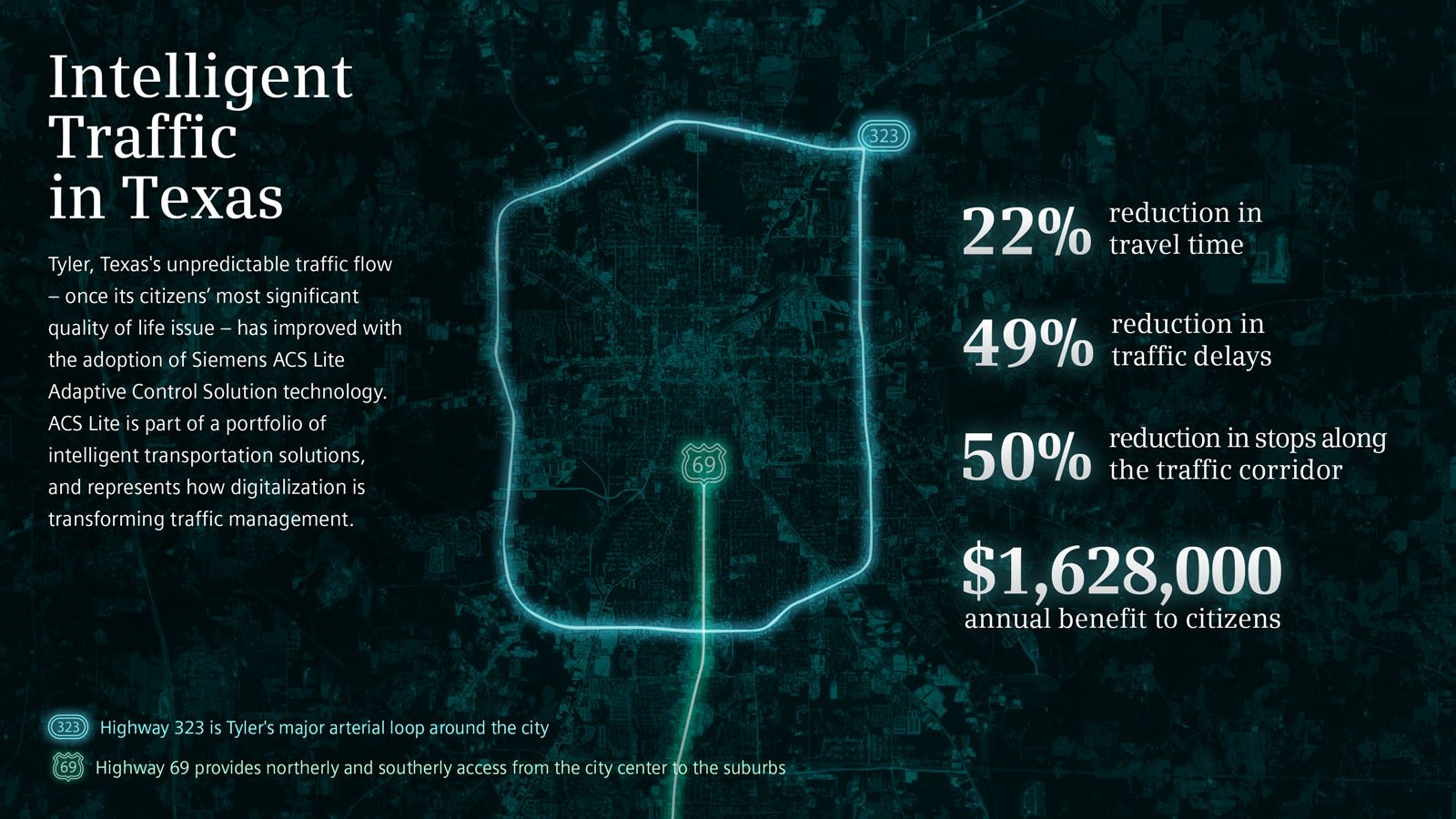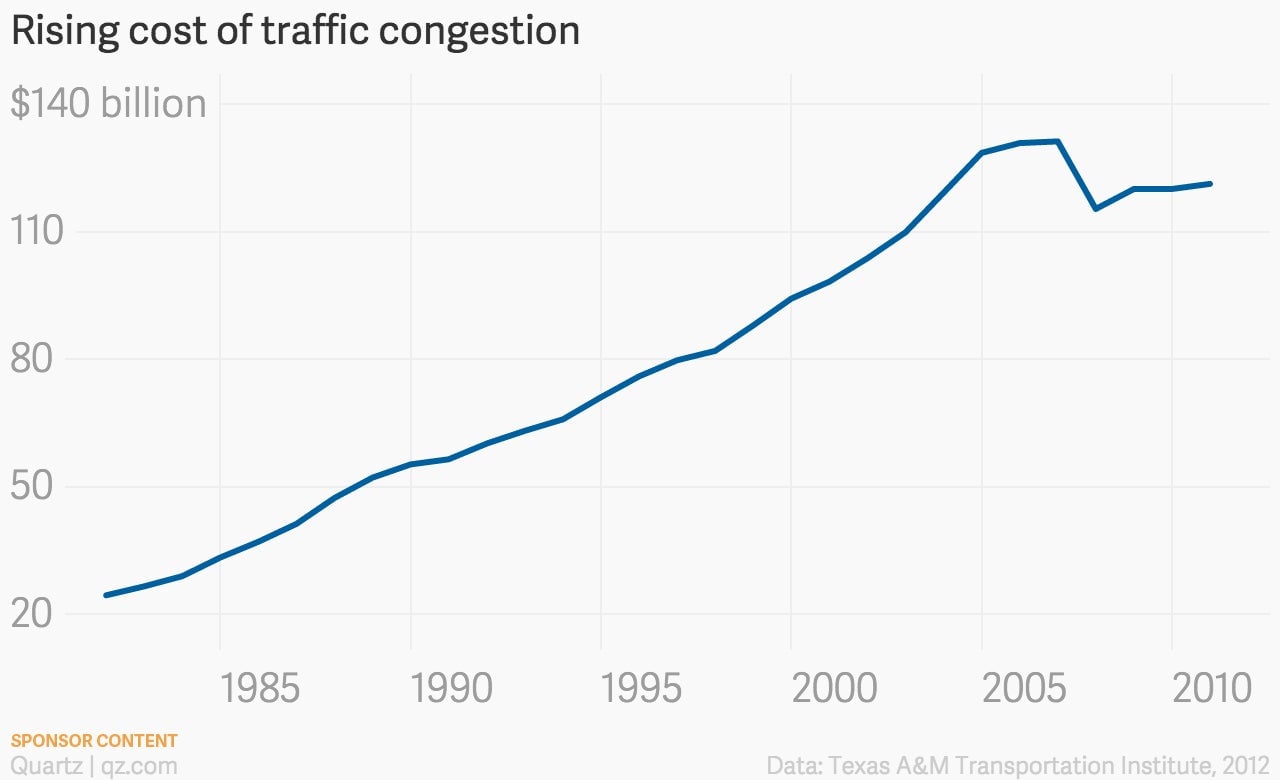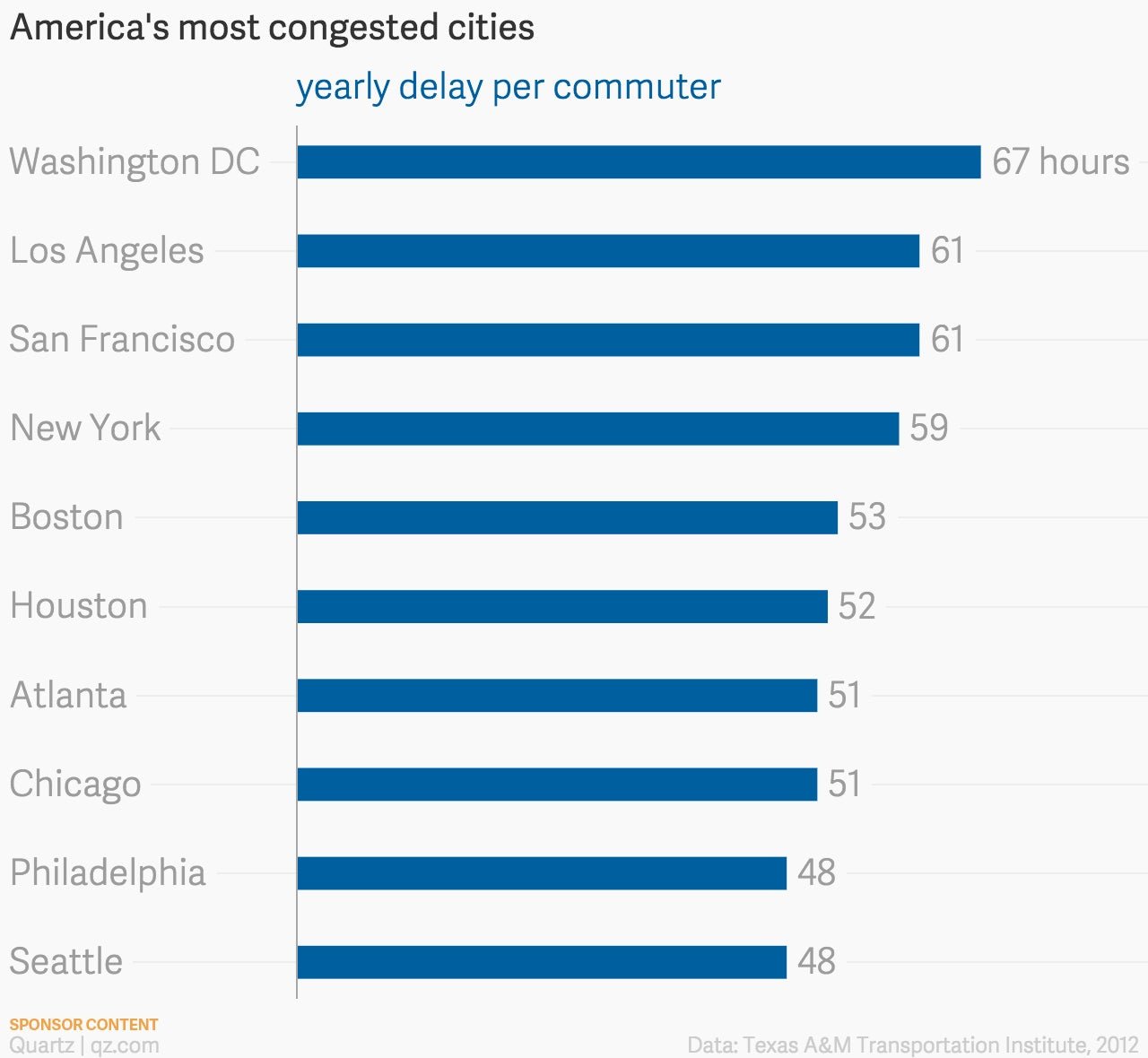How data is generating green lights to keep you moving on the road
Your last glorious run of green lights was no accident. These are the all-important “green times” that consume someone like Mark Rogers of Siemens Intelligent Traffic Solutions.


Your last glorious run of green lights was no accident. These are the all-important “green times” that consume someone like Mark Rogers of Siemens Intelligent Traffic Solutions.
“There is about one intersection per one thousand in population,” Rogers said in an interview. “As towns add intersections they have to get communications back to their control systems.” Detectors at intelligent intersections are tracking traffic patterns, volume, and speed, all of which is routed to a city’s central traffic management system to be considered alongside detections from surrounding intersections.
The data gathered can unlock street grids, reducing congestion by self-learning from traffic patterns the intersections see on a daily basis. One of Siemens’s traffic management systems, TACTICS 3, marries data calculation and visualization, offering a traffic engineer or control center operator a way to search & filter for problem intersections. It works for street grids ranging from 30 intersections to 800.
“In the first 90 seconds, a traffic engineer will be able to tell whether all of his intersections are communicating back to the control center properly,” Rogers said. “The next thing to do is get a good feeling for whether the arterials are timed properly.”
The software is able to quickly analyze the available data, comparing it against historical traffic activity. Promptly lowering speed limits or opening an emergency lane in response to the data can reduce the chance of an accident or congestion. The centralized system allows for fast, responsive decisions, reacting in real-time to the conditions on the road.

Traffic management software like this exemplifies the digitalization movement. Not to be confused with digitization, or the broader shift from analog to digital technology, digitalization refers to the way that networks, data, and connected devices are revolutionizing industries. The key to that revolution is turning those networked devices, and the vast amounts of data they produce, into value. A traffic management system’s value is earned by its ability to automate complex, data-rich tasks, making it easier for traffic engineers to make quick and informed decisions.
Rogers noted that while experienced traffic engineers oversee the TACTICS system, because of the software’s ease of use, “it is possible to hire an operator and train them to make the system work.”
It has taken time for digitalization’s true potential to become apparent—the “internet of things,” the mobile revolution, and other key platforms still had to come online one node at a time—but those harnessing this promise are tapping into a new era of productivity and efficiency.
The impact of modern traffic management grows when combined with energy, public transit, and infrastructure monitoring technology. The skyline of smart cities will help define the digitalization boom. Because these advances all cut down on emissions (by as much as 20% from smoother city driving) and other environmental burdens, those skylines may be much easier to see.

The digitalization drive must also be sustainable. Siemens traffic management software eases the transition by providing functionality on any cloud-connected device rather than specialized hardware. Siemens also uses its technology expertise and resources to ensure compatibility with prior investments. “When we install a TACTICS system it can communicate with our controllers that are extremely old, that use a specific protocol that is very efficient to us,” Rogers said. “There are other protocols that we can also communicate with as well.”
There is traffic to control everywhere, whether on the road or coursing through some other potential opportunity. New ways of looking at the flow, and keeping it moving, will fuel a future of breathtaking acceleration for those ready to take the ride.
Learn more about how digitalization is changing the rules of the game here.
This article was produced on behalf of Siemens by the Quartz marketing team and not by the Quartz editorial staff.